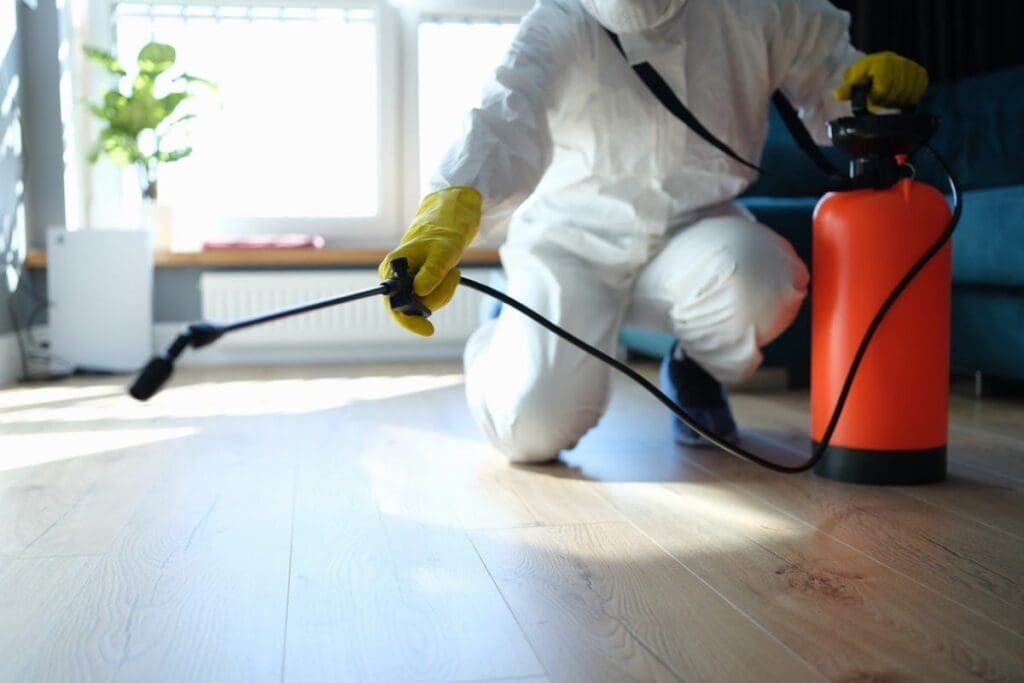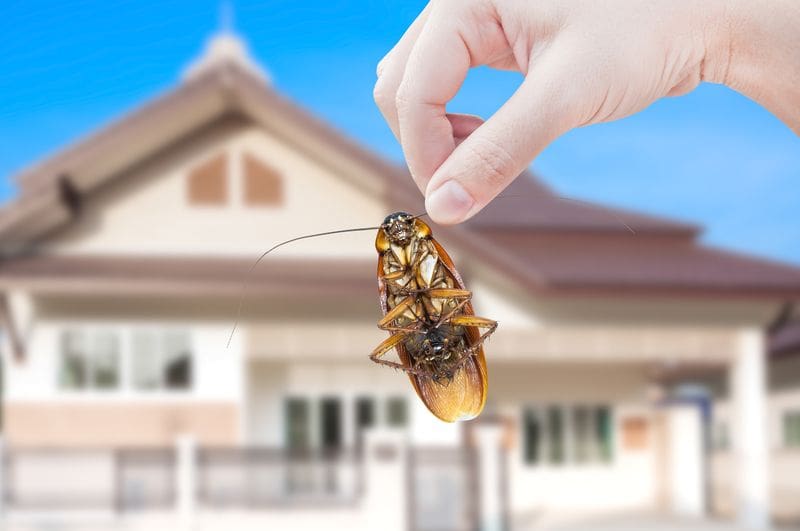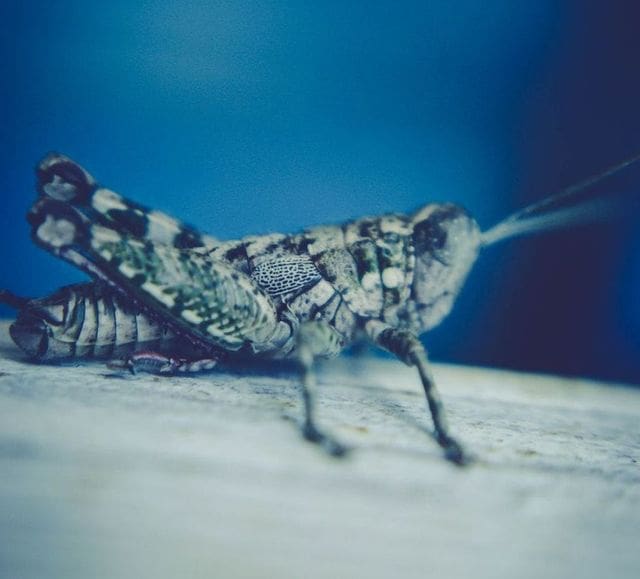In the world of pest control, technology has emerged as a valuable ally. With advancements in various technological tools, the battle against pests has become more efficient and effective. From smart traps that can capture and monitor pests remotely to sophisticated software that provides in-depth analysis and tracking, technology is revolutionizing the way pest control professionals tackle infestations. In this article, we will explore the role of technology in modern pest control and how it is shaping the industry for the better. Get ready to discover the innovative solutions that are paving the way towards a pest-free future.
Pest Control Challenges
Pest control is an ongoing challenge faced by homeowners, businesses, and agricultural industries alike. There are several key challenges that make pest control a complex task.
Rapid growth of pest populations
One of the biggest challenges in pest control is the rapid growth of pest populations. Insects and rodents have a remarkable ability to reproduce quickly, causing infestations to escalate rapidly if not addressed promptly. This can lead to significant damage to property, crops, and even pose health hazards to humans and animals.
Increased resistance to traditional pesticides
Another challenge is the increased resistance of pests to traditional pesticides. Over time, pests have developed resistance mechanisms that render conventional insecticides less effective. This means that the same pesticides that were once successful in controlling pest populations may no longer be as effective, requiring the use of alternative methods.
Environmental concerns
Environmental concerns also play a crucial role in modern pest control. Traditional pesticides often have detrimental effects on the environment, including contamination of water sources and harm to non-target organisms. There is a growing need for pest control methods that are environmentally friendly and sustainable.
Introduction of Technology
Technology has revolutionized the field of pest control, offering innovative solutions to address the challenges mentioned earlier. The introduction of various technological advancements has significantly improved pest control practices.
Improved pest detection
Early and accurate detection of pests is essential for effective control. Technology has facilitated the development of improved pest detection methods. Electronic monitoring devices, such as sensors and traps, can detect pests early on and provide valuable data on the extent of infestation. This enables swift action to be taken, preventing further spread and damage.
Enhanced monitoring and data collection
Technology has enabled enhanced monitoring and data collection in pest control. Wireless sensors and networks can be deployed to monitor pest activity and environmental conditions in real-time. This data can be analyzed automatically, providing valuable insights into pest behavior and helping in decision-making processes.
Targeted and precise pest control methods
Advancements in technology have also led to the development of targeted and precise pest control methods. Instead of indiscriminately spraying pesticides over a large area, technology allows for more focused and efficient pest control. This not only minimizes the use of chemicals but also reduces the impact on non-target organisms and the environment.

Pest Detection Technologies
Detecting pests accurately and efficiently is crucial for effective pest control. Technology has introduced various pest detection methods that go beyond traditional approaches.
Electronic monitoring devices
Electronic monitoring devices, such as traps and sensors, have become essential tools in modern pest control. These devices are designed to detect the presence of pests and monitor their activity. They can be strategically placed in areas prone to infestations, allowing for early detection and timely intervention.
Remote sensing and imaging
Remote sensing and imaging technologies have also transformed pest detection. High-resolution satellite imagery and drones equipped with cameras can be used to identify areas with high pest activity, enabling targeted interventions. These technologies provide a bird’s eye view of the landscape, making it easier to detect signs of infestation.
DNA-based detection methods
DNA-based detection methods have emerged as highly accurate and specific tools for pest identification. By analyzing the DNA of pests, scientists can determine the species present and their population size. This information helps in developing targeted control strategies and tracking the success of pest management efforts.
Monitoring and Data Collection
Accurate and timely data collection is essential for effective pest control. Technology has made significant advancements in this area, providing valuable insights into pest behavior and population dynamics.
Wireless sensors and networks
Wireless sensors and networks have revolutionized data collection in pest control. These sensors can be deployed in various locations to monitor environmental conditions, pest activity, and population trends. The data collected by these sensors is transmitted wirelessly in real-time, allowing for quick analysis and decision-making.
Automated data analysis
Technology has enabled automated data analysis, speeding up the process of extracting meaningful insights from large datasets. Sophisticated algorithms can analyze vast amounts of data collected from various sources, including sensors, satellites, and drones. This analysis provides valuable information on pest behavior, invasion patterns, and the effectiveness of control measures.
Real-time remote monitoring
Real-time remote monitoring has become possible with the advancement of technology. Pest control professionals can monitor pest activity and environmental conditions remotely, allowing for immediate action when necessary. This real-time monitoring reduces response time and ensures that interventions are timely and effective.

Targeted Pest Control Methods
Targeted pest control methods focus on specific pests while minimizing the impact on non-target organisms and the environment. Technology has enabled the development of several targeted pest control strategies.
Biological pest control
Biological pest control involves the use of natural enemies, such as predators, parasites, and pathogens, to control pests. Technology has improved the production and distribution of biological control agents, making this method more accessible and viable. Insects and microorganisms can be mass-produced in laboratories and released in affected areas, effectively reducing pest populations.
Genetic pest control
Genetic pest control involves manipulating the genes of pests to reduce their population or hinder their reproductive ability. This can be achieved through various techniques, such as introducing sterile males or using RNA interference to disrupt critical genes. Genetic pest control offers a targeted and sustainable approach to pest management.
Sterile insect technology
Sterile insect technology involves rearing large numbers of sterilized male insects and releasing them into the wild. When these sterile males mate with wild females, no offspring are produced, leading to a reduction in the pest population over time. Technology has improved the efficiency of mass rearing and sterilization processes, making sterile insect technology more practical and cost-effective.
Advancements in Pesticides
Pesticides play a crucial role in pest control, but traditional formulations often have limitations in terms of toxicity and environmental impact. Technological advancements have led to the development of safer and more effective pesticide formulations.
Non-toxic and eco-friendly pesticides
Non-toxic and eco-friendly pesticides are a promising development in modern pest control. These formulations use natural ingredients and non-toxic compounds that are less harmful to humans, animals, and the environment. Some biopesticides, derived from plants or microorganisms, target specific pests while leaving beneficial organisms unharmed.
Microencapsulation for controlled release
Microencapsulation technology allows for the controlled release of pesticides over an extended period. The active ingredient is encapsulated in tiny particles that gradually release the pesticide, resulting in longer-lasting effectiveness. This controlled release reduces the amount of pesticide required and minimizes the risk of environmental contamination.
Smart delivery systems
Smart delivery systems are another advancement in pesticide technology. These systems utilize innovative techniques to improve the efficiency and accuracy of pesticide application. For example, precision sprayers equipped with sensors and algorithms can target specific areas with high pest density, reducing pesticide use and waste.

Precision Agriculture
Precision agriculture combines technology and agricultural practices to maximize productivity while minimizing environmental impact. In the context of pest control, precision agriculture techniques have proven to be highly effective.
Integrated pest management (IPM)
Integrated pest management (IPM) is a holistic approach that combines various pest control strategies to achieve long-term pest suppression. Technology plays a crucial role in IPM by providing real-time data on pest populations, environmental conditions, and the effectiveness of control measures. This information allows for informed decision-making and the implementation of targeted pest control interventions.
Use of drones for targeted application
Drones equipped with specialized sensors and cameras have become essential tools in precision agriculture. In pest control, drones can be used to accurately identify pest-infested areas and deliver targeted pesticide applications. This reduces the use of chemicals and minimizes the impact on non-target organisms and the environment.
GPS technology for accurate pesticide application
GPS technology enables accurate and precise pesticide application. By integrating GPS systems with sprayers and other pest control equipment, operators can ensure that pesticides are applied only where needed. This reduces waste, improves efficiency, and minimizes the risk of unintentional harm to beneficial organisms.
Automation in Pest Control
Automation has transformed many industries, including pest control. The integration of robotics and artificial intelligence (AI) has revolutionized pest control practices, making them more efficient and cost-effective.
Robotic pest control devices
Robotic pest control devices are increasingly being used to manage pest populations. These devices can navigate through various terrains and deliver targeted control measures. For example, autonomous robots can detect and eliminate pests using lasers, vacuum systems, or traps. This automation reduces the need for manual labor and enhances the precision of pest control efforts.
Automated trap and bait systems
Automated trap and bait systems have simplified pest monitoring and control. These systems are designed to attract pests using lures or baits and capture or eliminate them automatically. The data collected from these traps can be wirelessly transmitted for analysis, allowing for real-time monitoring and intervention.
AI-driven decision making
Artificial intelligence (AI) algorithms can process large amounts of data and make informed decisions in pest control. By analyzing data on pest populations, environmental conditions, and control measures, AI can optimize pest management strategies. AI-driven decision making improves the efficiency and effectiveness of pest control interventions.

Digital Platforms and Apps
Digital platforms and apps have revolutionized many industries, and pest control is no exception. These platforms and apps offer a range of services and resources to assist homeowners, businesses, and pest control professionals.
Mobile apps for pest identification
Mobile apps have become valuable tools for pest identification. With a simple photo, users can upload an image of a pest and receive instant identification and information about the pest’s behavior, habitat, and control methods. These apps empower homeowners and professionals alike to identify pests accurately and take appropriate action.
Online pest control consultation
Online pest control consultation platforms connect users with experienced pest control professionals remotely. Users can seek advice on pest management strategies, ask questions, and receive personalized recommendations. This provides convenient access to expert advice and helps users make informed decisions regarding pest control.
Data sharing and community engagement
Digital platforms facilitate data sharing and community engagement in pest control. Users can report pest sightings, share photographs, and exchange information on pest infestations. This crowdsourced data can be used to track pest populations, identify emerging threats, and inform pest control strategies at a local or regional level.
Advantages and Limitations
While technology offers numerous advantages in modern pest control, it also presents certain limitations that must be considered.
Efficiency and cost-effectiveness
Technology has significantly improved the efficiency and cost-effectiveness of pest control. By enabling targeted interventions, reducing chemical use, and optimizing control strategies, technology helps achieve better pest management outcomes. This can lead to cost savings for individuals and businesses.
Reduced environmental impact
Technological advancements in pest control have also contributed to a reduced environmental impact. By minimizing the use of chemicals and adopting environmentally friendly pest control methods, technology supports sustainable practices that protect ecosystems and non-target organisms.
Dependency on technology and expertise
Despite its benefits, technology also introduces a level of dependency on both equipment and expertise. Operators must have the necessary skills to operate and maintain technological tools effectively. Furthermore, reliance on technology for pest control can create vulnerabilities if the technology fails or is not accessible.
Privacy and security concerns
Digital platforms and apps raise privacy and security concerns. When using such platforms, users may need to share personal information, including location data and photographs. It is essential to ensure the security and privacy of this data to protect users from potential risks.
In conclusion, technology has revolutionized the field of pest control, providing innovative solutions to address the challenges of rapid pest growth, pesticide resistance, and environmental concerns. The introduction of improved pest detection methods, enhanced monitoring and data collection techniques, targeted pest control strategies, advancements in pesticides, precision agriculture, automation, and digital platforms have significantly transformed pest control practices. While technology offers many advantages, it is crucial to consider its limitations, such as the need for expertise, potential dependency, and privacy and security concerns. By embracing technology responsibly, individuals, businesses, and agricultural industries can enhance their pest control efforts, leading to more effective and sustainable outcomes.


I am Randy, the author behind PestControld.com. Drawing from decades of experience, I aim to provide valuable insights, expert advice, and practical recommendations to help you make informed decisions when assessing viable pest control solutions.